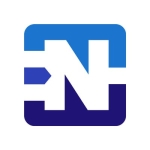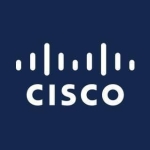What is our primary use case?
These are gateway firewalls to the Internet for every site. At a majority of the sites, we use the firewall as our gateway for the network below.
Previously, we used them just for the Internet firewall and Internet security side. However, in the last year or two, we have started to migrate them as the gateway routers, e.g., as gateways for the networks below. They are doing Internet firewalling as well as firewalling for the networks below.
We are using the PA-220s, PA-440s, PA-820s, PA-3250s, and PA-5250s. We are using all of those hardware models. Then, we are running the PAN-OS 10.1.3 on those.
We have around 40 locations worldwide. At minimum, we have one Palo Alto Networks NG Firewall at each location. At some of the larger sites, we have two Palo Alto Networks NG Firewalls in HA configuration. Then, at our headquarters and disaster recovery site, we have two at each site.
What is most valuable?
The WildFire feature that they offer is very nice to have. The URL filtering that they offer has been a great help to us as well. We have found with the URL filtering that they offer that we are able to categorize what traffic can go outbound to the Internet from our internal network. By doing the URL filtering, we are able to say that we are not allowing gambling, adult content, or certain URL categories that we just don't want to allow. Then, with WildFire, that helps detect any viruses coming inbound or on east-west traffic inside of our network.
Palo Alto Networks NG Firewalls embeds machine learning in the core of the firewall to provide inline, real-time attack prevention, which is very important. I got an email saying that there was going to be a new 400 series firewall, and it was talking about the ML and AI features that it is offering. That is very exciting to see coming for all our firewalls.
We have the Palo Alto Next-Gen firewalls as well as Cortex XDR for the antivirus side. We are making use of Cortex XDR and Data Lake to correlate the data. We definitely see the benefits of having all that in one unified platform. Some of my colleagues are able to see how certain malware security incidents can correlate to how the virus or malware came into the network, then how it traversed our network based on the XDR information.
I can manage 1,000 firewalls from a single pane of glass.
What needs improvement?
I am looking to have the machine learning see how a virus or malware will morph, then prevent that from happening. That seems invaluable at this point.
We have a lot of the older firewall models, i.e., the PA-220. It seems that with newer operating systems the PA-220 is becoming slower than when I first bought it. It is not really an issue for users who are passing traffic through the firewall, but more from the management access of it.
For how long have I used the solution?
We have had them for about three years.
What do I think about the stability of the solution?
I have had some issues here recently, but it has been more operating system issues. As far as the hardware goes, they have been very solid. Out of the last three or four years that we have utilized Palo Alto Network NG Firewalls. I have only had one time where I had a hardware failure on it that had to get a replacement.
What do I think about the scalability of the solution?
It is very scalable. The Panorama management tool makes it very easy to add a new firewall. You can add one, 10, or 100 firewalls, deploying them quickly and keeping the same security posture that you had in place previously with other devices.
I have not noticed any trade-offs from security versus network performance at all. I think they are both running very well. We haven't lost network performance with an increase in security or vice versa.
The entire company is using the solution. We are a manufacturing company who manufactures electronic interconnects. We have our own marketing department, engineering, learning development, HR, accounting, and IT. Thus, we have a broad spectrum of users who are using the solution.
We actually have a very small staff. There are only five of us who are actively administering the Palo Alto environment. We have around 40 locations worldwide with just over 8,000 users globally.
We are using it at every facility. We are using it as a gateway router as well as our next-gen firewall. We have no plans to change all that. We are pretty happy with how we are configured. So, I think we will keep that trajectory.
How are customer service and support?
The technical support is very good. I am very happy with the tech engineers. They have always been quick to respond and very knowledgeable about the issues that I have had. They help me get those issues resolved quickly. I would give them 10 out of 10.
How would you rate customer service and support?
Which solution did I use previously and why did I switch?
It gives us added security compared to our previous firewalls. They were very cumbersome to manage, and they had no central management. By switching to Palo Alto Networks NG Firewalls, we made use of the Panorama management tool to manage all our firewalls. The management side is much easier. Also, it provides visibility from their monitoring to be able to see the traffic. Whereas, I was not able to see that before with our previous firewall manufacturer.
With our previous firewall vendor, the maintenance was running to the end of its contracts. Therefore, we were looking to switch anyway because we just weren't happy with that hardware. Our implementation strategy was basically to replace all the old firewall hardware with something new. At the time, we were pretty happy with what Palo Alto Networks was offering.
How was the initial setup?
The setup is very straightforward. I am familiar with other firewalls and the configurations for them. Switching to the Palo Alto Networks NG Firewalls was pretty seamless.
The initial deployment of the first site, switching from the old firewalls to the Palo Alto Network NG Firewalls, took about two to three days configuration-wise. Actually switching over from the old firewall to the new firewall was pretty seamless because we can preconfigure the firewall and then replace the old firewall with it. There were no issues.
What about the implementation team?
Our VAR helped us do some research on what firewalls would be the best for us. We did our own testing, and we liked this solution. That is why we ended up going with it.
What was our ROI?
We do have other tools that we are phasing into the Palo Alto unified platform environment, bringing in Cortex XDR as well as looking at SIEM products. So, we definitely see the benefit of the unified platform. We have been able to cut down on some of our other hardware. So, it is definitely saving us costs as far as combining different hardware into one hardware device.
We have not had to replace hardware routers nor purchase additional hardware. So, that has provided a little bit of an ROI.
What's my experience with pricing, setup cost, and licensing?
The Palo Alto solution is actually not expensive. It was comparable to the old firewall manufacturers that we were using. From the benefits that we have gotten out of the Palo Alto products, it is well worth the difference in cost, even though the difference in cost is not much at all. I would highly recommend Palo Alto products to anyone.
I just started getting in some of the PA-400 series a couple weeks ago. As far as pricing goes, it was not that much more than the existing hardware platform or the existing firewall that we had in there, i.e., the PA-220. It was not much more expensive and the performance was way better, as far as the management of the firewall itself. The management of those firewalls has greatly been increased.
Which other solutions did I evaluate?
When we were looking to switch, we narrowed it down to two or three. Then, we obviously decided to go with the Palo Alto product. Palo Alto had better specifications for their hardware.
What other advice do I have?
I would highly recommend the solution as well as looking at the new PA-400 series product line with the machine learning and AI. That is a very good feature that is now available.
The biggest lesson for me was to not skimp out on hardware based on pricing.
I would give this solution 10 out of 10. I am very happy with the product.
Disclosure: PeerSpot contacted the reviewer to collect the review and to validate authenticity. The reviewer was referred by the vendor, but the review is not subject to editing or approval by the vendor.














